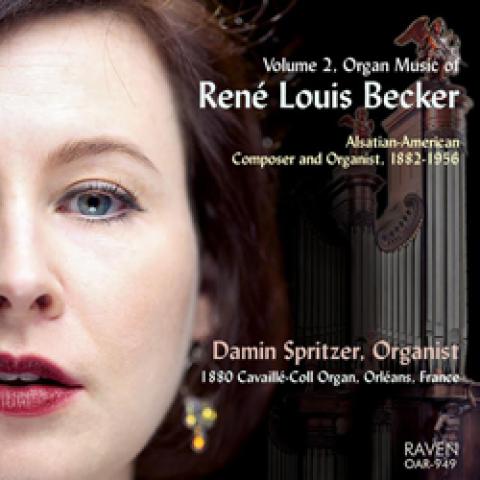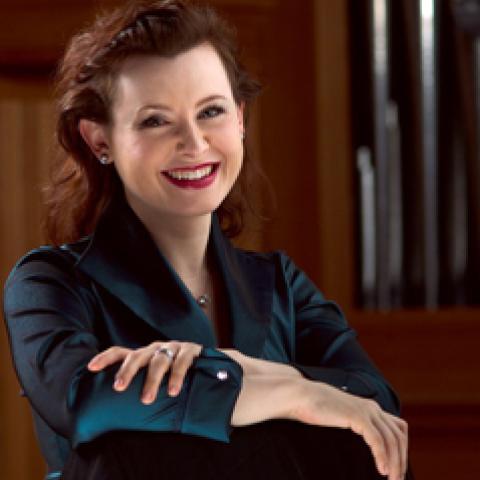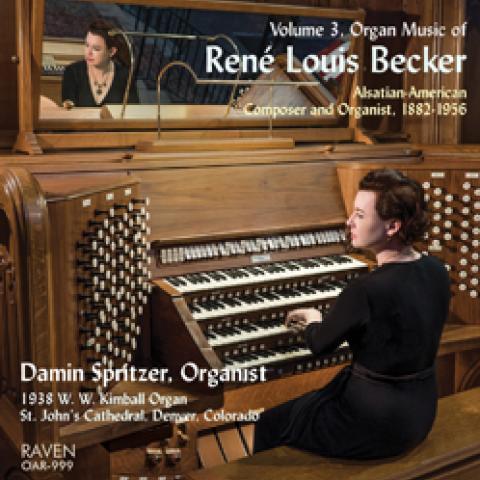
Damin Spritzer has recorded a Raven CD of organ works by René Louis Becker.
Spritzer recorded the music on a large Cavaillé-Coll organ built in 1890 using most of the pipes of the four-manual 1789 Jean-Baptiste Isnard organ in the Church of Saint-Salomon-Saint-Gregoire in Pithiviers, France. This is the first recording of the organ following a 2008 restoration.
René Louis Becker (1882–1956) was born and educated in Strasbourg, France, and immigrated to America in 1904 to join his older brothers Lucien and Camille in St. Louis, where they established the Becker Bros. Conservatory of Music in 1905.
During nine years in St. Louis, he married, published 59 compositions for various instruments, taught in Kenrick Seminary, and performed frequently.
Becker moved to Belleville, Illinois, in 1912 to serve as organist at St. Peter’s Cathedral (1913 Estey organ) and published 50 compositions. Relocation in 1915 took the Becker family to Alton, Illinois, where he taught, composed, and was organist at the 1893 Hook & Hastings organ of the Cathedral of Sts. Peter and Paul, publishing nearly 100 more compositions during 15 years.
In 1930, Becker became the organist at Blessed Sacrament Cathedral in Detroit, playing the 1925 Casavant; in 1942 he moved to St. Alphonsus Church in Dearborn, Michigan, where he served as organist on the Austin organ until retirement in 1952 at the age of 70. Among René Becker’s oeuvre are 152 scores for solo organ.
For information:
www.RavenCD.com.





